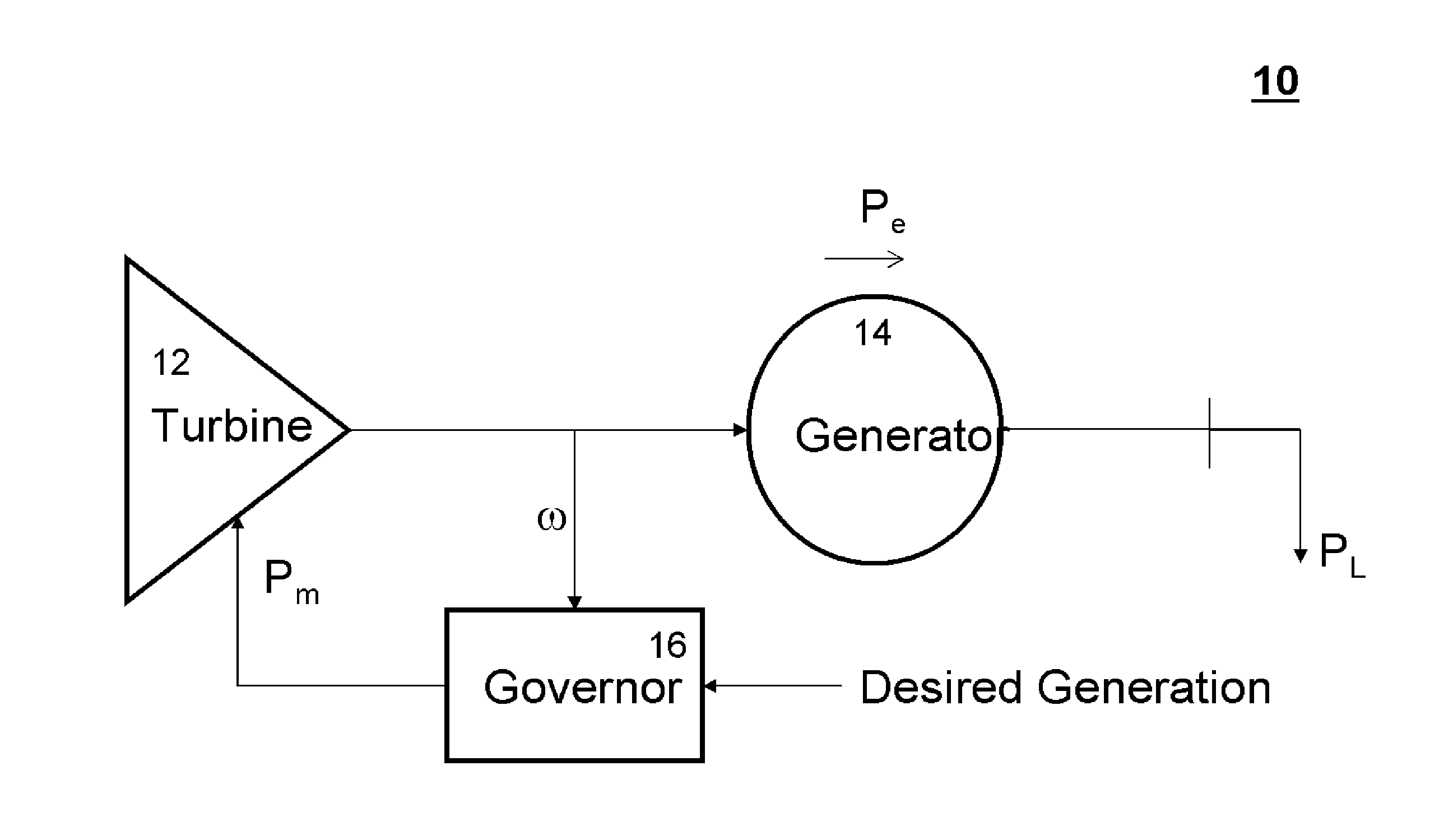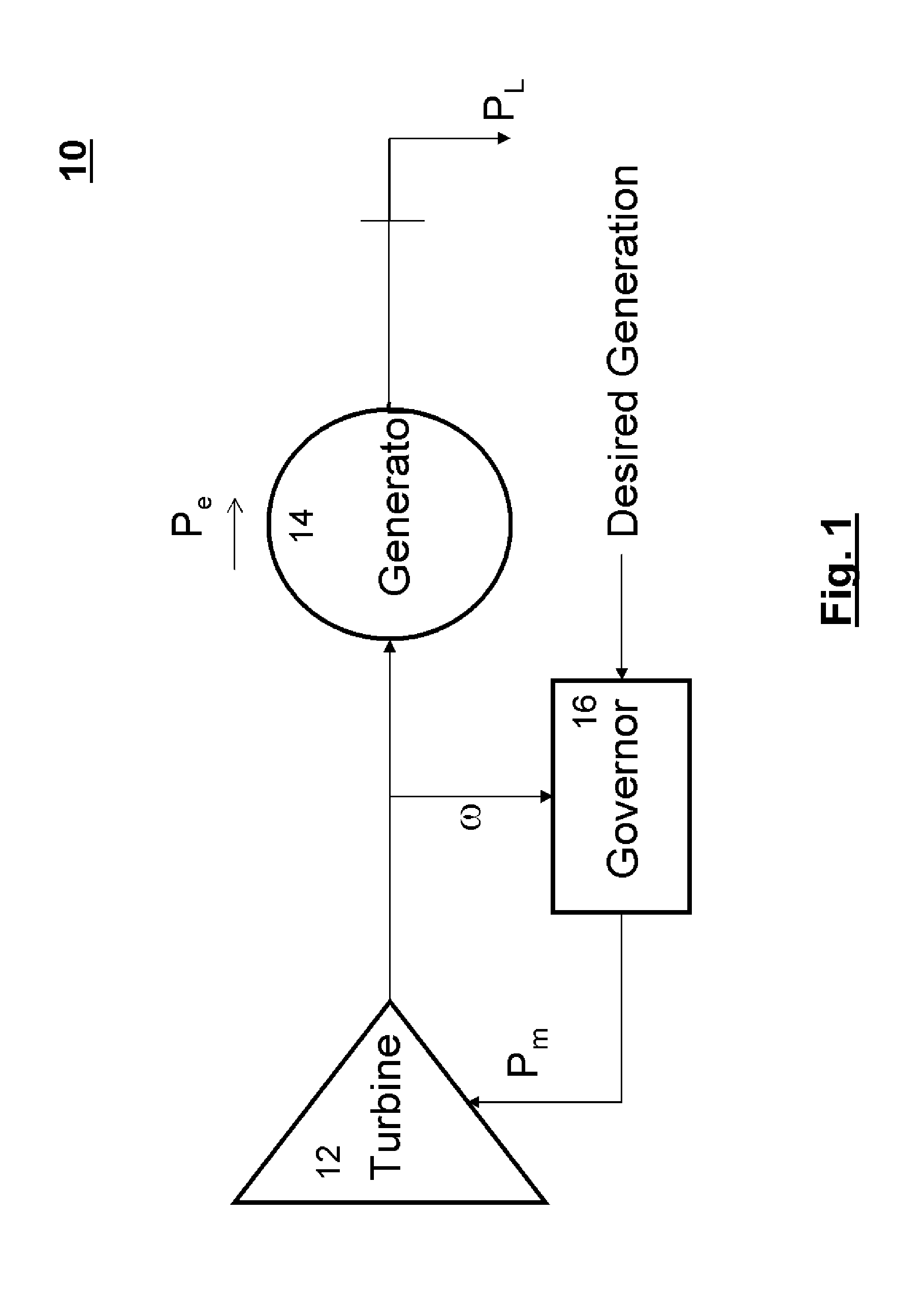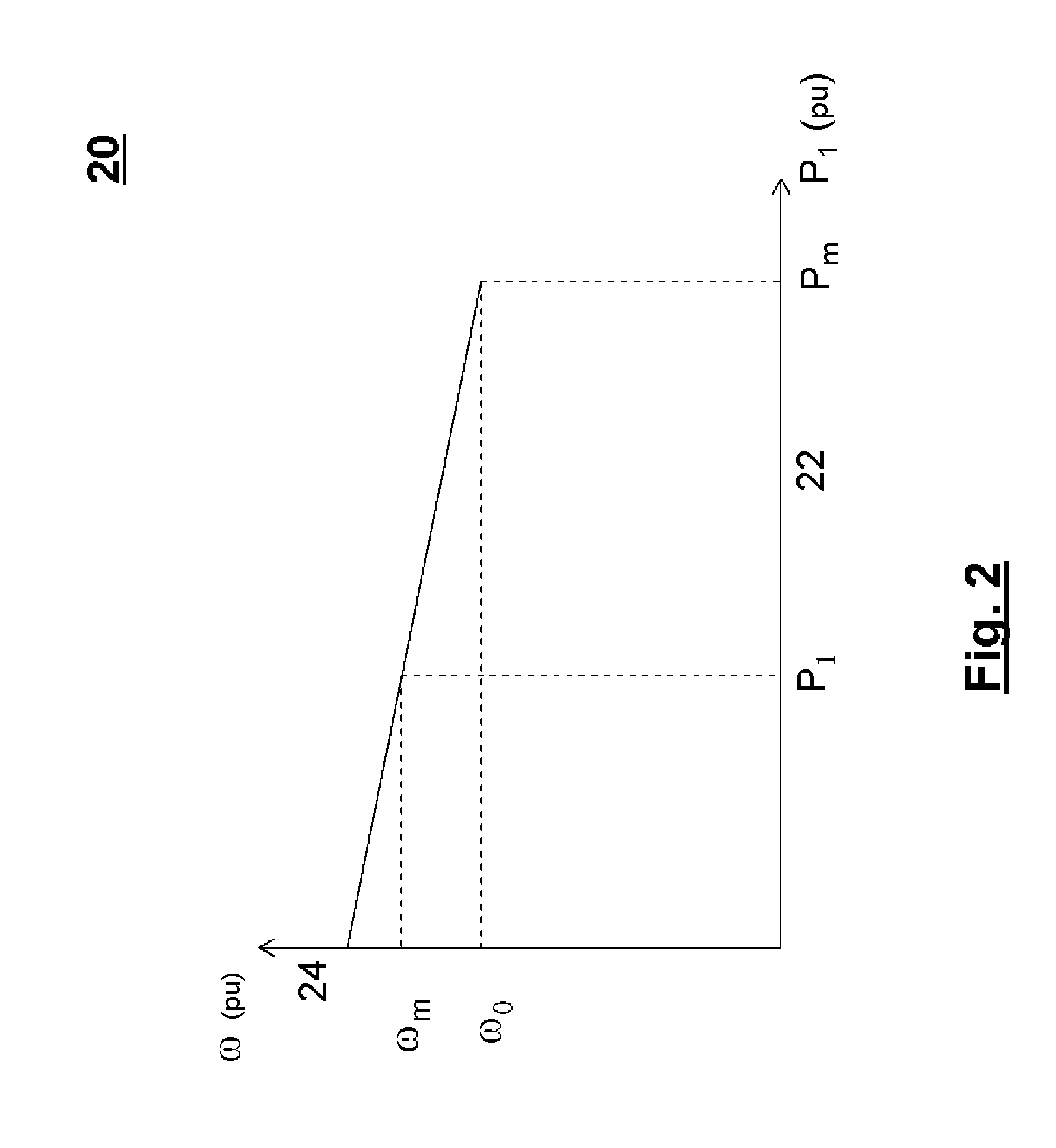Method and system for using demand response to provide frequency regulation
a demand response and frequency regulation technology, applied in the field of electric power systems, can solve the problems of increasing the potential for system frequency variability, increasing the frequency of frequency to increase and may increase beyond the nominal frequency, and not all generators can operate reliably in such a variable way. , to achieve the effect of improving the frequency regulation
- Summary
- Abstract
- Description
- Claims
- Application Information
AI Technical Summary
Benefits of technology
Problems solved by technology
Method used
Image
Examples
Embodiment Construction
[0019]As used herein, the terms “controller” or “module” refers to software, hardware, or firmware, or any combination of these, or any system, process, or functionality that performs or facilitates the processes described herein.
[0020]When introducing elements of various embodiments of the present invention, the articles “a,”“an,”“the,” and “said” are intended to mean that there are one or more of the elements. The terms “comprising,”“including,” and “having” are intended to be inclusive and mean that there may be additional elements other than the listed elements.
[0021]FIG. 1 shows one example of a power generation system 10. Power generation system 10 includes a turbine 12, a generator 14 and a governor 16. The turbine 12 and the generator 14 are connected to a common shaft (not shown). Thus, when the turbine 12 spins, generator 14 converts the mechanical spinning energy into electrical energy. During a stable operation, a turbine mechanical power (Pm) and an electrical load powe...
PUM
 Login to View More
Login to View More Abstract
Description
Claims
Application Information
 Login to View More
Login to View More - R&D
- Intellectual Property
- Life Sciences
- Materials
- Tech Scout
- Unparalleled Data Quality
- Higher Quality Content
- 60% Fewer Hallucinations
Browse by: Latest US Patents, China's latest patents, Technical Efficacy Thesaurus, Application Domain, Technology Topic, Popular Technical Reports.
© 2025 PatSnap. All rights reserved.Legal|Privacy policy|Modern Slavery Act Transparency Statement|Sitemap|About US| Contact US: help@patsnap.com



